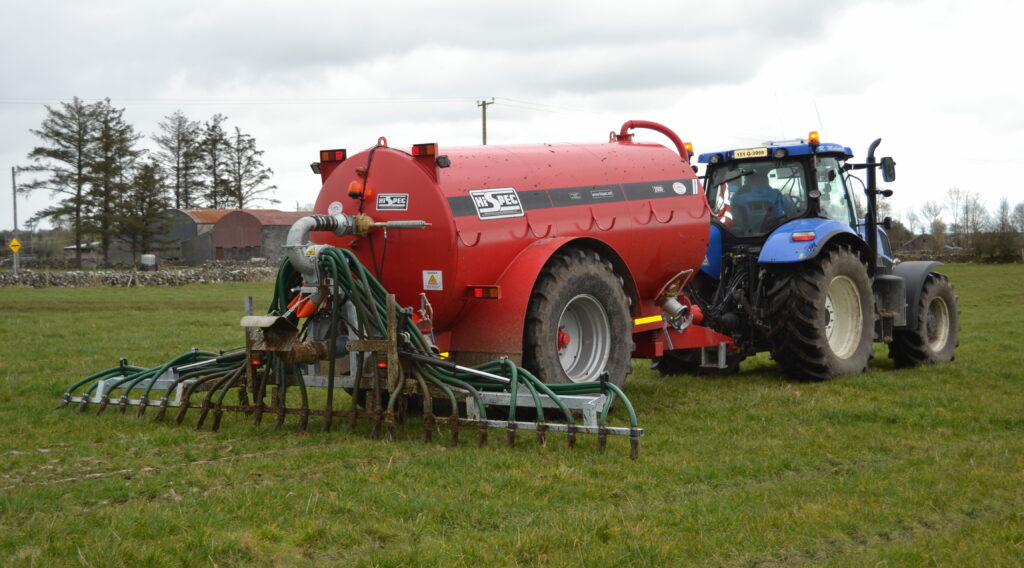Time and time again, the amount of our soils that are still not at optimum soil fertility is brought up and discussed.
This is no surprise given that, currently, just 15% of our Irish grassland soils are at optimum soil fertility. That is, at an optimum soil pH and optimum for phosphorus (P) and potassium (K) levels.
This is having a negative impact on our grass production potential, as well as our nitrogen use efficiency (NUE); in turn, affecting our environmental impact.
During the Fertiliser Association of Ireland’s (FAI’s) Spring 2020 scientific meeting, Teagasc’s Ger Courtney discussed how John Molyneaux – a dairy farmer from Co. Limerick – managed to make substantial improvements to his farm’s overall soil fertility in just four years.
In 2017, none of John’s paddocks were at optimum soil fertility; but after carrying out some soil tests and putting a plan in place – in 2020 – this figure dramatically increased to 60%.
However, Ger pointed out that this figure includes some land which was leased last year; when this is taken out of the equation, the remaining area is at 90% optimum soil fertility.
John, alongside his wife Martina, are milking a herd of 100 spring-calving crossbred cows and the farm is stocked at 2.6 LU/ha. Last year, the herd achieved 472kg of MS/cow with just 500kg of meal/cow fed for the year.
John’s goal is to become self-sufficient through growing more grass and minimising the amount of imported feed. Last year, he took 49 grass measurements and the average grass grown on the farm reached 14.5t DM/ha.
Investment in soil fertility
Speaking at the event, Ger explained that reaching this level of grass growth has taken a huge investment in soil fertility. As a matter of fact, John’s investment in soil fertility doubled between 2014 and 2018.
In 2014, John invested €252/ha in soil fertility, but this jumped to €544/ha in 2018. However, this has since pulled back to a figure of €330/ha – for last year.
Driving these improvements in soil fertility is John’s confidence that he will be in a better position to fully feed his herd without having to buy in silage, and with minimal supplementation only.
He also recognises the contribution soil fertility has made in helping them achieve the over 14t DM/ha which was grown on the farm last year, noted Ger.
At the end of 2016, Ger explained that John soil sampled the whole farm and a plan was then put in place outlining how he was going to make improvements, in terms of the farm’s soil fertility.
Now, John takes soil samples every year as he is part of the Kerry Agribusiness / Teagasc Joint Industry Programme.
A total of 240t of ground lime was applied to the farm – at a rate of 2.5t/ac – over the past four years. Now, just two of John’s paddocks are not at an optimum soil pH.
In the application of this lime, Ger explained that John usually doesn’t wait until the autumn to spread. He said: “He will spread lime in the spring on low covers and whenever bare ground is available. He won’t wait until the end of the year to spread.”
Slurry
Ger stressed that slurry has had a crucial part to play in John’s fertiliser programme – in terms of the recycling of nutrients.
Through yearly soil sampling, John has been able to target his slurry applications to paddocks which need it most (Index 1 and Index 2 soils); rather than applying it to the most convenient paddocks, typically around the farmyard, Ger noted.
When applying slurry, all of it is applied by a contractor using a low-emission slurry spreading (LESS) method – which Ger said he has been using for four years and he is very happy with.
Ger added: “John uses his maps from the soil tests almost like a bible when he is working out his fertiliser programme and where he needs to apply slurry.”
John also takes note of paddocks which had high grass off-takes, to ensure that he targets these with slurry – as they will need higher replacements of P and K.
Nitrogen fertiliser use
Continuing, Ger explained that the NUE has been an important part of the farm’s grass production. Last year, John applied 36kg of N/ha or 236kg of N/ha in total.
Protected urea was also used on the farm for the first time last year. Ger stated: “He was very happy with the outcome, as it had no impact on overall grass production. He now intends to use only protected urea in 2020.”
Regarding NUE, Ger said: “The overall NUE for the farm was calculated out at 30%; this looks at the N input to the farm versus the N output by the farm. Looking at some of the research farms, 25% is a common figure.
“John’s high milk protein level of 3.76% and low concentrate feeding levels were some of the main factors contributing to this relatively high NUE – and through being relatively self-sufficient for forage to feed the herd.”
Reseeding
A small number of paddocks (as seen in the cumulative grass yield per paddock above) are pulling down John’s average grass production figures. These paddocks were reseeded in 2018 – but were not fit for grazing until late July – due to the drought.
Ger highlighted that the first stage for John was focused on building his soil fertility, but his next phase will be on reseeding. John’s target now is reseed up to 15% of the farm each year.
“This, he feels, with allow him to increase his grass grown by 1.5t to 2t – by getting the best grass varieties into paddocks. He is also looking at over-sowing clover into some paddocks and increasing the amount in his grass-seed mixes, when he is reseeding,” explained Ger.



